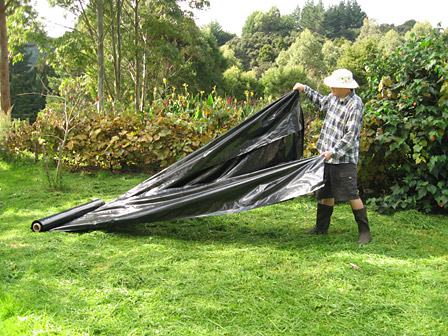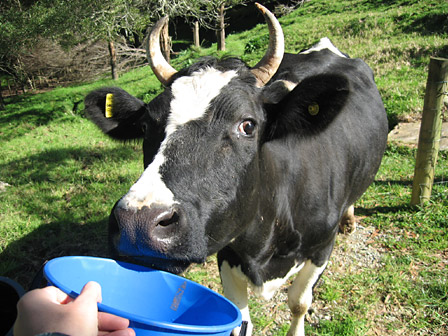We spent some time working in the garden today, despite the rain, flopping around in our wet-weather gear like a couple of ducks. The warm rain created ideal conditions for planting out some seedlings — sugarsnap peas, shelling peas, Dalmatian peas for drying, also a few red orach plants, and more kale and green onions.
It is taking a lot of work to get the ground here looking hospitable for tender young vegetable plants. For one thing, our lawn, where we have decided to make out first gardens, is covered in kikuyu grass. (For anyone not familiar with kikuyu, it’s a kind of invasive tropical crab grass that’s ubiquitous in Northland, New Zealand.) Not wanting to resort to chemical herbicides, we covered parts of the lawn several months ago with sheets of black polythene to knock back the kikuyu and other weeds. Believe me, our yard has not been looking so stylish these last few months!
The next hurdle is the high clay content of our soil. Our main strategy for dealing with this is to begin improving the soil structure by adding as much organic matter as we can lay our hands on. We are pulling back the sheets of black polythene, breaking up the clay, and sprinkling it liberally with gypsum. After that comes a layer of rotted silage and cow manure, a sprinkling of lime, and a layer of wood chips. Finally our garden is starting to transform into the kind of place where we feel our precious vegetable seedlings might have a chance.

Covering kikuyu with polythene

Waiting a couple of months…

Clay, clay and more clay

Gypsum is supposed to help loosen clay

Beds taking shape – paths to be covered with weed cloth soon

Happy Sugar Snap Peas!


